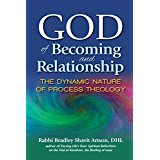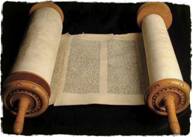The scientific limits of human understanding
When contemplating the possible origins of the universe, Process theologians offer explanations based on science and human reason. But neither theologians nor scientists can step outside the cosmos to prove or disprove theories about creation.
We humans have an intuitive sense of reality, but that sense is limited: human intuition and logic are not reliable for size ranges vastly larger or smaller than our own. For such sizes and durations, the only effective system of human relation and expression (constrained by our scientific knowledge) is the five Ms:
Math… Meditation… Metaphor… Music… Myth…
Each of these “five Ms” uses a language that attempts to link human consciousness and existence to realms of reality vastly larger or smaller than we are, vastly shorter or longer than the time frames we are evolved to recognize and intuit. (God of Becoming, p. 22)
Refusing to ignore the unformed darkness
Instead of thinking of creation as ex nihilo – out of nothing – most Process theologians understand God as the organizing force of an eternally existing reality.
When God began to create heaven and earth…. the earth was unformed and void, with darkness over the surface of the deep, while a wind from God swept over the face of the waters. Then God said, “Let there be light”; and there was light. (Genesis 1:1-3)
Artson writes, If we approach this text through the dominant understanding of God – God as omnipotent, eternal, and impassive – we are forced to think of the Beginning as an effortless, spontaneous moment that produced everything that exists today. But when we go back to the text, it shows us the unformed and void darkness (tohu va-vohu) that already existed when God began creating. God’s creating is a process of mobilizing continuous self-creativity from within, and that bubbling, irrepressible depth remains the source of self-creativity, potentialities, and resistance to all imposed power.
(Note how Rabbi Artson uses the “5 Ms” in the following article:
http://www.nhs-cba.org/RabbiArtsonPDFs/Vibrating%20Over%20The%20Deep.pdf)
Do you use the “5 Ms” to find meaning in life? In Scripture?
The divine lure and our partnership with God
In Process thought, every moment is a moment of creation. This richer view of continuous creation… is also reflected in Jewish sources. Genesis begins with the word breishit: “When God began to create heaven and earth…” When God begins to create, chaos is already there; then God begins to speak the chaos into increasing order and diversity. By the end of the first chapter of Genesis, God has spoken creation into a symphony of diverse becoming.
The lure: At each stage of the process, God turns to creation itself and issues an invitation, a lure, saying: “Let there be…” Here God is inviting creation to be a co-partner in the process of creating – summoning, inviting the sun, stars, and planetary objects into becoming. Creation, then, is the process of God luring emergent being into order, abundance, diversity and goodness.
Understanding creation: two options
Individual scientists have strong preferences, but science as a whole does not definitely weigh in on this issue.
The eternal inflation theory asserts that our space-time bubble is located in a cosmic “sea” – sometimes called the superuniverse, the multiverse, or the meta-universe. Within the eternal inflation, only quantum rules govern, although on rare occasions due to long-shot quantum odds, exceptional space-time bubbles emerge into being. Within each bubble there is a coherent space-time, and we live in one such bubble….
The big bang theory starts with the instant in which space-time exploded into existence. The Big Bang itself is held to be inexplicable; the regularities of physics fail as we move back in time to the singular moment itself.
These theories may be disturbing to people who have read the Bible exclusively through dominant theological lenses, but Jewish traditional voices provide the resources to accommodate both.
Process Theology saves us from having to weigh in beyond what we can know.
God may be the One who creates everything out of nothing, or God may be the One who creates order out of eternity and infinity. We can indulge in a little bipolarity here, rather than asserting a false certainty. Instead of creating a false dichotomy between the two plausibilities, we can embrace both understandings as useful metaphors to orient and motivate ourselves within the cosmos.



In my own life, I have used budget and demographic analyses to make decisions and plan for needed outreach. If meditation means quiet private thought, I do that every day. Metaphor or reasoning by analogy, I have not used too often. Music: I have tunes running through my consciousness seemingly all the time. I have not knowingly used myth. With regard to scripture, Kabbala gives much emphasis to numerological explanations. Are they coincidences? Are any of them predictive? Certainly there are many numerical conflicts in Torah regarding ages of central figures and duration of time spent in a country. So numbers like those in Torah should be considered qualitatively but not quantitatively. The dimensions for offerings and for structures are probably “spot on.”
I have used meditation as a tool at times. As for Myth, take perhaps Genesis through the advent of Abraham.
As for metaphor, the orations of the Prophets. I agree with much of Rabbi Artson’s comments on scientific and theologic explanations. But I would add that he makes two assumptions that are not necessarily true: Since we do not understand the dimension of time, over the “long haul,” is there such a thing as beginning and end. Secondly, was there ever such a thing as creation ex nihilo?